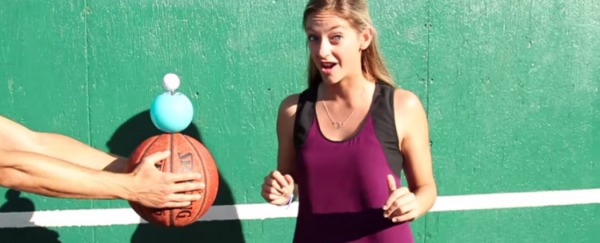Trust Physics Girl to take something as innocuous as the old stacked ball drop - you know, when you place a golf ball on top of a bouncy ball, on top of a basketball, drop the stack and see how high it bounces - and compare the physics of what's going on with something as mind-numbingly colossal as a supernova.
What's so cool about the stacked ball drop experiment? When dropped on its own, the golf ball bounced to a height of 106 cm. When dropped on top of the two larger balls, it skyrocketed to a height 800 percent more than that - just over 8.5 metres! So how is it getting the energy to propel itself so far?
As the video above explains, each ball starts out with a certain amount of potential energy from the height at which it's dropped. Once the ball makes contact with the ground, a portion of the energy is expelled in heating up the ball, and some is expelled in heating up the ground, which means you're never going to get the ball to bounce to the same height from which it was dropped. Except if you place it on top of a larger ball, and then you're going to get it to bounce way higher than the original dropping distance.
"As the basketball bounces, it compresses, storing elastic potential energy," says Physics Girl. "As it releases, it springboards the tennis ball upwards just at the right moment." You'll see in the video that the basketball actually bounces less than if it was dropped on its own, because of the energy transfer to the smaller ball on top. What it's doing is transferring its higher momentum - achieved from a higher mass - to the smaller object.
So what's all this got to do with supernovas? I'll let Physics Girl explain that one in the video above, because it's amazing. That's the thing about physics, it follows the same rules, whether in a simple high school science experiment, or out in the ridiculousness of space.
